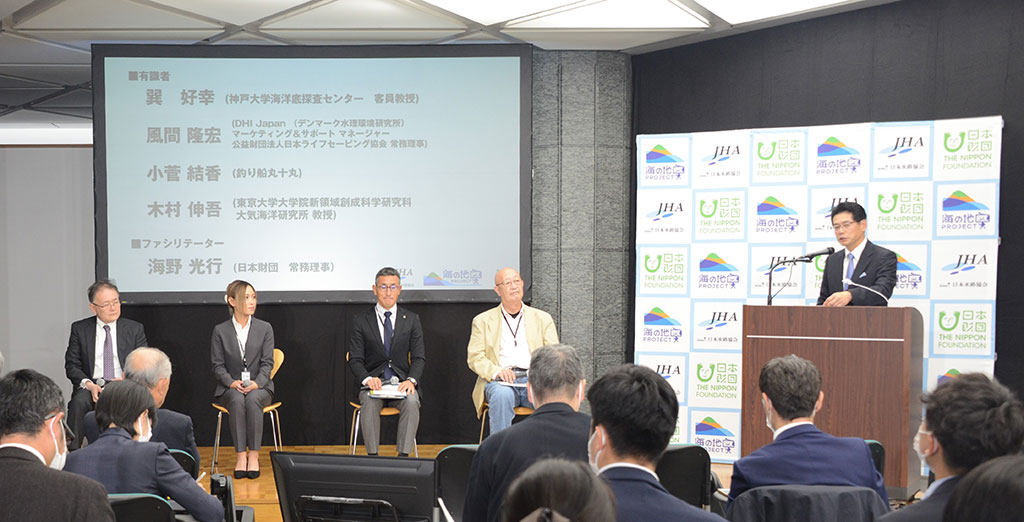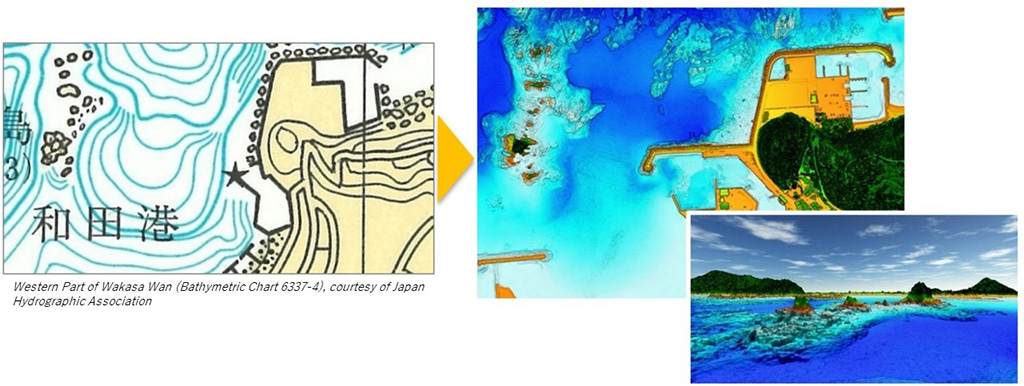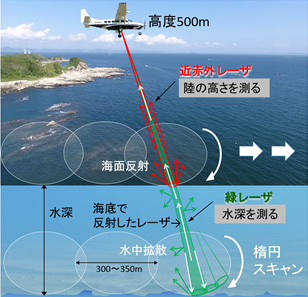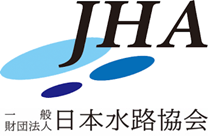Umi-no-Chizu Project Launched for Japan’s First Aerial Mapping of 90% of Coastal WatersAnticipated uses include accident prevention, blue carbon promotion, and disaster countermeasures

At a press event held on October 24 at The Nippon Foundation headquarters, the Japan Hydrographic Association (JHA) and The Nippon Foundation announced the joint launch of the Umi-no-Chizu Project (Map of the Sea Project) to use aerial measurement to map 90% of Japan’s shallow coastal waters (up to a depth of 20 meters).
Regulatory and administrative management and jurisdiction issues have meant that less than roughly 2% of Japan’s coastal waters have been mapped to date, and this has held back research and technological advances in fields including marine accidents, disaster prevention and mitigation, blue carbon, and understanding and preserving biodiversity. This project with JHA is part of the Foundation’s ongoing work to address these issues. The project is Japan’s first*1 to use Airborne LiDAR Bathymetry (ALB), and aims to create “ocean maps”*2 of roughly 90% of Japan’s approximately 35,000 kilometers of shoreline – shallow waters that JHA has been unable to map in detail to date – over roughly 10 years. The Nippon Foundation, which has been working for many years to build a foundation and develop human resources for handing over the bounty of the ocean to future generations, will use the maps created by the project to promote interest in and understanding of the ocean, especially among children.
- “Japan’s first” use of nationwide aerial measurements, based on the information available to The Nippon Foundation (as of October 2022).
- Ocean maps refers to the mapping of the underwater topography of shallow coastal waters (depths of 0 to 20 meters).

Overview of the Umi-no-Chizu Project
The project, scheduled to last for 10 years from fiscal 2022, aims to use ALB to create ocean maps of roughly 90% of the shallow waters along the approximately 35,000 kilometers of Japan’s coastline, with a total budget of 20 billion yen.
Detailed ocean maps to be used to prevent marine accidents, for disaster prevention and mitigation, and in environmental fields
Topographical measurements of Japan’s shallow coastal waters (depths of 0 to 20 meters) have been made primarily from ships. In recent years, it has become possible to make these measurements from airplanes, but currently less than roughly 2% of Japan’s coastal waters have been measured using ALB. The underwater topographical information taken from airplanes is highly precise, and can be used to create much more detailed maps than is possible using measurements from ships. Detailed underwater topographical information obtained over wide areas will be used to create a database for understanding various events that occur in the ocean, and this is expected to lead to a better understanding of the ocean in fields including the prevention of marine accidents and disaster prevention and mitigation, while enhancing research and technologies related to understanding and preserving biodiversity and environmental education.
ALB technology and features
The Airborne LiDAR Bathymetry being used in this project projects infrared and green lasers from the air to take underwater topographical measurements in areas where the water is highly transparent, up to depths of roughly 20 meters. This makes it possible to collect seamless data from land to shallow waters where it is difficult to take measurements from ships, and to collect detailed data over large areas with a high degree of efficiency.

Umi-no-Chizu Project going forward
Throughout history, people have lived with the ocean, which has brought people together and been a bridge across nations, languages, and cultures. In addition to marine resources, people benefit from the ocean’s role in the weather and climate. Recently, however, climate change and other factors have caused changes in the ocean environment, creating an unprecedented crisis and weakening the relationship between people and the ocean. Historically, we have used the ocean, but going forward it will be necessary for people to take it upon themselves to protect the ocean. This project therefore seeks to create ocean maps that also incorporate knowledge, to create ties between people and the ocean, protect the ocean’s bounty, and pass these on to future generations.
Press event comments
Yohei Sasakawa, Chairman, The Nippon Foundation
Globally, humans have made detailed surveys of land topography, but even though the earth is said to be a water planet, the ocean’s topography has hardly been surveyed at all. The well-known detailed maps made by Ino Takadata were completed some 200 years ago on October 23. Coincidently, that was yesterday, and today we are embarking on a new ocean mapping project.
Shigero Kato, President, Japan Hydrographic Association
This project will use the new technology of aerial measurement using laser beams, and will create unprecedented underwater topographical data. Through this revolutionary project, we hope to resolve and contribute to the improvement of various ocean issues.
About the Japan Hydrographic Association
Established in 1971, the Japan Hydrographic Association has promoted the development of ocean survey technologies and distributed waterway measurements and charts, with the aim of making effective use of this information to promote maritime safety, prevent marine accidents, preserve the ocean environment, and spur ocean development.

Contact
Public Relations Team
The Nippon Foundation
- Email: cc@ps.nippon-foundation.or.jp



